#rca cables for car audio
Explore tagged Tumblr posts
Text
Best RCA Cables For Car Audio

Best RCA Cables For Car Audio
Installing a quality aftermarket car audio system is a great way to improve the sound of your vehicle. However, in order to get the best performance from your system, it is important to use high-quality components. By using only the best quality parts can help extend the life of your system and prevent any potential damage – this includes even things like the cables being used.
RCA cables are some of the most commonly used cables in-car audio systems. They are used to connect a variety of components, including amplifiers, head units, and subwoofers. There are a number of different RCA cable types available on the market, so it can be tough to know which ones are best for your needs. In this blog post, we will discuss the different types of RCA cables and recommend five of the best options for car audio applications to help you get the most bang for your buck from your system.
What Is An RCA Cable?
An RCA audio cable is a type of cable used to connect audio components. They are also known as phono cables or composite video cables. RCA cables were invented in the 1940s by the Radio Corporation of America (RCA).
The name “RCA” comes from the company’s initials. RCA cables are typically made of copper and have two conductors: a positive conductor (the red wire) and a negative conductor (the white wire).
RCA audio cables are most commonly used to connect turntables to amplifiers, but they can also be used to connect other types of audio components, like CD players and tape decks and are also used in car audio systems.
How Are RCA Cables Used In Car Audio?
RCA cables are used for a variety of things in car audio systems. They can be used to connect an amplifier to your head unit, or they can be used to connect your head unit to a subwoofer. There are also RCA cables that are used to connect two amplifiers together or to connect an amplifier to a set of speakers. In short, RCA cables are versatile and can be used for a variety of purposes in your car audio system.
rca cables for car audio
Are All RCA Cables The Same Quality?
There are different types and qualities of RCA cables, just like any other type of cable. The better the quality, the better the signal it can carry.
When it comes to audio equipment, you want to use the best quality cables you can afford in order to get the best possible signal. Cheap cables can cause all sorts of problems, from interference and static to poor sound quality.
If you’re serious about your car audio setup, invest in good-quality RCA cables. They may cost a bit more upfront, but they’ll save you money and headaches in the long run. Plus, you’ll be able to enjoy your music the way it was meant to be experienced – with crystal clear sound.
best rca cables for car audio
What To Look Out For When Choosing RCA Cables For Car Audio
When it comes to choosing RCA cables for your car audio system, there are a few things you need to keep in mind. Here are the most important factors:
– Length
Length is probably the most important factor when it comes to best 3.5mm audio cable . You want to make sure the cables are long enough to reach from your head unit to your amplifier, but not so long that they’re cumbersome. The standard length for RCA cables is 16 feet (about five meters).
– Connectors
Connectors are another important factor. You want to make sure the connectors are compatible with your head unit and amplifier. The most common type of connector is the phono plug, which has a diameter of about 0.25 inches (0.64 cm).
– Shielding
Shielding is also important in preventing interference from other electronic devices. The most common type of shielding is copper braid, which helps to block electromagnetic interference (EMI).
rca cables for car audio – Conductor Material
Conductor material is also important in determining the quality of an RCA cable. The most common materials are copper and aluminum. Copper is the better conductor, but it is also more expensive. Aluminum is a good conductor, but it is not as good as copper. So, when you’re choosing RCA cables for your car audio system, keep these factors in mind. Length, connectors, shielding, and conductor material are all important in determining the quality of the cable.
What Are Best RCA Cables For Car Audio There are a lot of different types of RCA cables out there. But which ones are the best for car audio? Here, we’ve selected the top five RCA cables for car audio, based on their quality, durability, and price.
Whether you’re looking for the best bang for your buck or the absolute best performance, one of these RCA cables is sure to meet your needs. Let’s take a look at our picks!
RCA Cable: https://bestelectricshop.com/best-rca-cables-for-car-audio/
0 notes
Text
today’s educational and demystifying post: How DO you connect a record player or turntable to a computer so you can rip vinyl?
Or for that matter, listen to records through your PC speakers. If this isn’t of interest to you, continue scrolling. If it is, click on thru to the other side...
Where does one get a thingie that plays records? You can go the cheap route and find one in a thriftstore, you can go the pricey route and buy one new, you can go the upper-mid-range route and find one at a used record store (at least you’re more certain than at a thrift that the thing will work!) -- or you can cheat the system a bit by buying one of those all-in-one record/tape/CD/radio setups that look like an old cabinet, branded with Crosley or Intelligent Technology or the like, and see what options it has for output (two RCA output jacks and/or a headphone jack), which often costs less than just a turntable alone.
Can we even do this? It’s fair to say that not every record player can be connected to anything at all if it has built-in speakers. Many, though, have a headphone jack that when plugged into will shut off the speakers, so that’s one way. Turntables meanwhile always have some way to connect to a stereo system, specifically the coaxial connectors known as RCA plugs, and occasionally have a headphone jack also. The RCA plugs are usually color coded red and white for the left and right channels, though nothing’s going to explode if you switch them. :) Here’s what the RCA plugs from a turntable look like next to the RCA input jacks on the back of my stereo receiver:
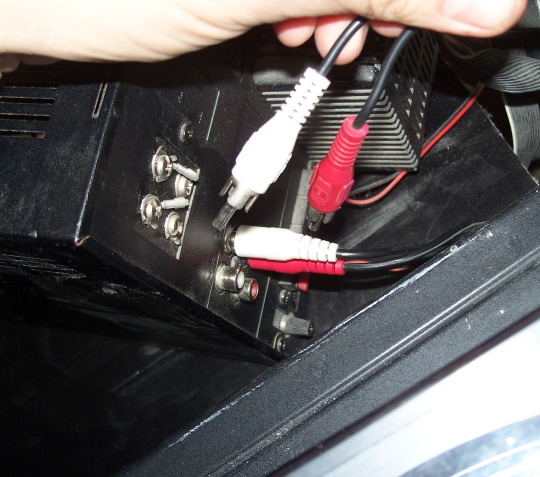
So how do I get the record player connected to my computer? Let’s look at the computer first... There’s a microphone jack on the computer, on the back or possibly you have a second one on the front of a desktop machine, or on a notebook there’s a jack on the side, and many are color-coded pink. (Additionally there may be a blue color-coded jack next to it labelled Line In. It does the same thing but at a different volume level and that’s what I use on my notebook because something’s wonky about my mike input.) Now let’s look at whatever you’re playing a record on... If it only has a headphone jack, you can use one of those plug-to-plug cables ($8 at Walmart, $1 at Dollar Tree) that have become popular for playing music from your cell phone or MP3 player through the Auxillary jack of your car’s radio. [left] If it has RCA plugs, there are handy adaptors (two styles are shown here) to shift from RCA jacks to a headphone plug. [right] 2-RCA-jacks-to-1/8″-stereo-plug adaptors are available online or you might find one at a thriftstore or electronics store like BestBuy.
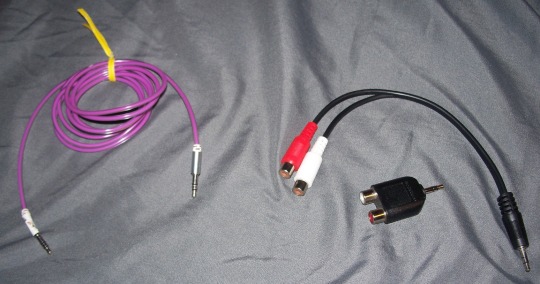
So plug the headphone cable into the record player’s headphone jack OR plug the two RCA plugs into the adaptor, and then stick the other end of the wire you’re holding into the computer’s microphone jack (or Line In). Now you are set!
(If you want to/can get a little more snazzy -- useful for adjusting volume and balance, the use of an equalizer, and some bonus effects like Bass Boost and Surround Sound -- here’s how I have my home setup: The turntable is connected to the RCA inputs on my stereo receiver, and I’ve run a cable from the receiver’s headphone jack to the computer’s input jack.)
Okay, so now what do I do on the computer? It’d take a longer post to explain every last detail fully, but you can shortcut past most of this by using the controls in the sound editor program Audacity, which you’ll probably want to be using anyway. (Nothing against any of its rivals like Magix Audio Cleaning Lab, which I also use for its various effects, but Audacity is very easy to understand for the process of ripping music from vinyl.) Let’s set Windows up to use the turntable as an input device now. In the latest version of Audacity, here’s the toolbar at the top:

First thing, choose the source (as shown). The above presumes that we’re using the frontside microphone jack on my computer; if the plug were in the backside Line In jack, that would be another option listed. Now we need to get the input sound level set. I’m going to put a record on and drop the needle in some random location; in the control buttons on the left I click Pause then click Record (just like a tape recorder!) so the input volume will be dynamically displayed without starting a recording:

The green ever-shifting bars in the input meter show that audio is coming into the sound card indeed, so that part was successful. Right in the middle (over the number 30) is the thumb for adjusting the input level -- if the bars weren’t going far on the scale, I’d move the thumb to the right to make it more sensitive, and if the bars were all the way to the right, I’d move the thumb to the left until the bars were maxing out between 6 and 12 on the scale, the yellow zone of the meter, because you don’t want it to be overloud (that’s called ‘clipping’; you can use the software to amplify not-loud-enough sound so being in the midrange is best). Once you have the input level corrected, now’s when you should adjust the output sound -- the standard Windows way, by clicking the speaker icon next to the clock to move the slider -- so you can hear it at your comfort level, and it doesn’t affect the volume of the audio files you create.
Okay, you can click the Stop button now that you have the input and output sound levels set, or you can restart the record where you want to begin and unpause. How to rip, edit, and save music is a different post. :)
What if I don’t hear what’s playing but Audacity shows the sound is working correctly? Also: Can I play vinyl and have the sound come through my PC speakers without being in a sound editor program? Input audio playing through the speakers is a function of Windows’ Sound control panel, the exact location of the toggle varies between versions, but here’s a screencap of what’s what in Windows 10:

Path here: Sound control panel, under Input the Microphone is selected so click Device Properties, then the window shifts to the Device Properties list; under Related Settings click Additional Device Properties, a new dialog pops up with four tabs, and under the Listen tab check “Listen to this device”. Also available here is the Levels tab, which is the place you’d be adjusting the recording level manually if you didn’t do it through Audacity as explained a minute ago.
A protip: It’s probably best to be listening through headphones, rather than using your computer’s speakers at normal volume, when ripping so you hear better sound quality as you work as well as so the playback sound doesn’t bleed/echo into the recording, because needles are fairly sensitive. Yes, I have an MP3 of Thompson Twins’ “Hold Me Now (Extended Version)” where you can hear me lean back in my creeky desk chair during a quiet passage...
So now you know how to physically set up a record player to your computer and how to get the computer to use the record player as an audio input!
66 notes
·
View notes
Text
Price: [price_with_discount] (as of [price_update_date] - Details) [ad_1] Product Description Male to Female Stereo Aux Extension Cable Compatible with Headphone, MobilePhone, Car Stereo, Home Theatre & More,Black, Pack of 1pc,1.5 Meters Connect your PC/Laptop, MP3 Player, and CD player to HiFi audio, Car stereo system with AUX-Input. You can use this cable to connect your for iPod, computer etc to your stereo receiver or other device with RCA audio jacks. ABOUT OUR PRODUCT Fantastic Audio Quality Professional quality connectors which protect the cables from corrosion while ensuring a premium connection for the best possible audio transfer year after year. Compatibility 3.5mm MP3 to RCA Audio cable is compatible with iPhone, tablets including Google Nexus, Samsung, MP3 players, CD players, laptops, tablets and any other digital device with a 3.5mm audio jack; and home audio systems, like amplifier or receiver with RCA jacks for audio inputs. Best for you New Audio Splitter Adapter Supports Various types of audio, video, AC, DC headphone plugs, sockets, plugs communications, phone plug, converter, SCART, air plug, BNC, banana plugs, switches, lathe parts and industrial connectors 3.5 mm stereo jack male to female Copper cable For high performance audio Extension transmission.Note-This will not Work for Microphone and Video. Cable Length-Available In 1.5 Mtr,3Mtr,5Mtr,10Mtr,15Mtr,20Mtr.All length available Connect & play music from your Smartphone, tablet & MP3 player to a car stereo, portable speaker or other 3.5mm stereo audio output. Pure Copper cable with Gold Plated Connectors. Can be used for portable audio device,All mobile phones, iPhones, MP3 player, iPod, Smartphone, tablet, etc. to your car stereo, PC, TV or any other audio speaker that is compatible with 3.5mm Auxiliary (AUX) [ad_2]
0 notes
Text
Experience flawless audio with the J&D AUDIOWAVE RCA Male to AUX 3.5mm Audio Cable! Perfect for connecting your 3.5mm devices to RCA inputs, this splitter ensures crystal-clear sound whether you're at home, in the car, or in the studio. 🎧🎛️ Upgrade your audio setup and enjoy your favorite tunes without distortion! 🔊
🎶🔊🎧
0 notes
Text
Car Audio Accessories You Didn’t Know You Needed: Enhancing Your Setup
When it comes to car audio, many people focus on the main components: the head unit, speakers, and amplifiers. However, there’s a world of accessories out there that can take your audio experience to the next level. Whether you're an audiophile or just someone who enjoys a good tune on the road, these car audio accessories can enhance your setup in ways you might not have considered. In this blog, we’ll explore some essential accessories that can improve your sound quality, convenience, and overall driving experience.

1. Sound Deadening Material
One of the most overlooked aspects of a car audio setup is how sound travels within the vehicle. If your car has a lot of road noise or vibrations, it can diminish your listening experience. This is where sound deadening material comes into play.
What It Does:
Sound deadening materials are designed to reduce vibrations and noise within your car. By applying these materials to the doors, trunk, and other panels, you can minimize the amount of external noise that seeps in. This helps create a quieter environment, allowing you to enjoy your music at lower volumes without distortion.
Types of Sound Deadening Material:
Foam Mats: These are lightweight and easy to install. They’re ideal for reducing noise and adding a bit of insulation.
Mass Loaded Vinyl (MLV): MLV is denser and provides superior soundproofing. It's great for larger areas, like the trunk.
2. Speaker Stands and Isolation Pads
Once you've upgraded your speakers, consider how they're mounted. The way speakers are positioned can significantly affect sound quality.
Why They Matter:
Speaker stands and isolation pads help decouple your speakers from the car’s surfaces. This reduces vibrations that can cause unwanted resonance and muddiness in your sound. It ensures that the sound from the speakers is clear and true to the original recording.
Benefits:
Improved Clarity: By reducing interference from the car's surfaces, your music will sound cleaner.
Better Bass Response: Isolation pads can enhance bass response by allowing speakers to move freely.
3. Line Output Converters (LOC)
If you’re upgrading your audio system but keeping the factory head unit, a line output converter can be a lifesaver.
What It Does:
A line output converter converts speaker-level signals to line-level signals, making it easier to connect aftermarket amplifiers to your factory system. This is particularly useful if you don’t want to replace your head unit but still want to boost your sound.
Why You Need It:
Compatibility: LOCs allow you to integrate amplifiers into your system without replacing the head unit, giving you flexibility in your setup.
Better Sound Quality: By amplifying the audio signal, you can achieve clearer sound and more powerful bass.
4. Equalizers
An equalizer can dramatically enhance your listening experience by allowing you to tailor the sound to your preferences.
What It Does:
Equalizers adjust the balance of different frequency ranges. With an equalizer, you can boost the bass, cut mids, or enhance treble frequencies, depending on what you like to hear.
Types of Equalizers:
Graphic Equalizers: These have multiple sliders that let you adjust specific frequency bands.
Parametric Equalizers: These allow for more precise adjustments, letting you choose the frequency and the bandwidth you want to modify.
Why You Need It:
Personalization: Customize the sound to match your music preferences or the acoustics of your car.
Correcting Issues: If certain frequencies sound muddy or overpowering, an equalizer can help you balance them out.
5. High-Quality RCA Cables
While they might seem mundane, investing in high-quality RCA cables can make a noticeable difference in your audio quality.
Importance of Quality:
Cheap RCA cables can introduce noise and interference into your audio signal, resulting in a less-than-ideal listening experience. High-quality cables ensure that the signal remains clean and strong.
Features to Look For:
Shielding: Look for cables with good shielding to prevent electromagnetic interference.
Gold-Plated Connectors: These provide better conductivity and resist corrosion over time.
6. Bluetooth Adapters
If your car doesn’t come with built-in Bluetooth, a Bluetooth adapter can revolutionize how you listen to music.
What It Does:
A Bluetooth adapter connects to your head unit and allows you to stream music from your phone wirelessly. This is a great way to access your playlists and favorite apps without the hassle of cords.
Benefits:
Convenience: Easily switch between calls and music without fumbling with cables.
Accessibility: Stream music from various apps like Spotify, Apple Music, or Pandora without needing a physical connection.

7. Capacitors
If you're running a powerful audio system, you may want to consider adding a capacitor to your setup.
Why You Need It:
Capacitors help stabilize the power supply to your amplifier by storing energy. When the amplifier needs a quick burst of power, the capacitor discharges, providing the necessary boost.
Benefits:
Prevents Dimmed Lights: By ensuring a steady power supply, capacitors can prevent your headlights from dimming when the bass hits.
Improves Sound Quality: A more stable power supply can lead to clearer sound reproduction, especially at high volumes.
8. Dash Kits and Wiring Harnesses
When upgrading your head unit, a dash kit and wiring harness are essential for a seamless installation.
What They Do:
Dash Kits: These help fit your new head unit into the dashboard without gaps or modifications.
Wiring Harnesses: These allow you to connect your new head unit to the factory wiring without cutting any wires.
Importance:
Using the correct dash kit and wiring harness ensures a professional-looking installation and can save you a lot of hassle.
9. Battery Voltage Monitor
If you’re pushing your car audio system to its limits, a battery voltage monitor can be a helpful addition.
Why You Need It:
These monitors help you keep an eye on your battery’s voltage levels. Running a high-powered audio system can drain your battery quickly, and monitoring the voltage can help you prevent issues before they arise.
Benefits:
Prevention: Helps avoid situations where your battery is too drained to start your vehicle.
Performance: Ensures that your audio system is operating efficiently.
Conclusion
Upgrading your car audio system doesn’t stop at the main components; it’s the little things that can make a big difference. From sound deadening materials to Bluetooth adapters, the accessories discussed in this blog can enhance your setup significantly. By investing in these often-overlooked components, you’ll improve your audio quality, reduce noise, and enjoy a more personalized listening experience.If you’re ready to take your car audio system to the next level, consider checking out a reputable shop specializing in car audio equipment like VIP PRO AUDIO They can provide the essential accessories that fit your needs and help you achieve the best sound possible. Happy driving and listening!
0 notes
Text
Decibelvibe Initial Tnz 7 - Portable Bluetooth Speaker, IPX7 Waterproof Speaker with 30W Powerful Sound, Deep Bass, Bluetooth 5.3, 25H Playtime, TWS Pairing, RGB Lights, for Home, Outdoor. (Cyan)
Price: Buy Now Last Updated: From the brand Sound Quality First The experience and know-how of a French Acoustic Engineering. TNZ SGVUM6 – Audio Graphic VU Meter with Rear RCA + 3.5 Auxiliary Input and Output, Wireless Input Through a Built-in Microphone, with 19 Colors for Home, Professionals, Car Audio. 1 Decibelvibe Stereo Graphic VU Meter1 Audio RCA Cable1 Power Cable (North America Type…

View On WordPress
0 notes
Text
Tips to improve audio using appropriate original used speakers from your car
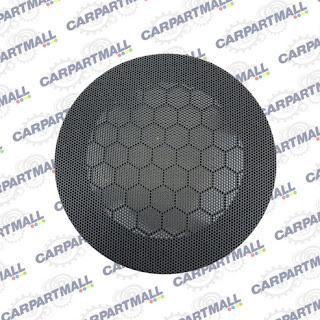
We'll take a drive in our car and the first thing we do after getting in it will surely be to turn on the Stereo Radio and put on our favorite music, which is why considering our car only as a means of transportation is for lovers of silence. While it is true, the majority of the world's population listens to music, it is a pleasure for many. Therefore, it is necessary to have a good sound system to enjoy an exquisite environment for our ears.
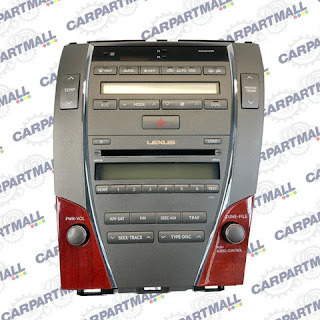
In that personal space that we have in our car, in which we often spend a considerable amount of time and deserve pleasant distraction while driving, a good set of speakers is absolutely necessary, to listen to your favorite music, podcasts or audiobooks. Let's explore some tips that will help us easily and reliably improve the sound quality in our car. You came to the right place, if what you want is to save money and optimize the driving experience.
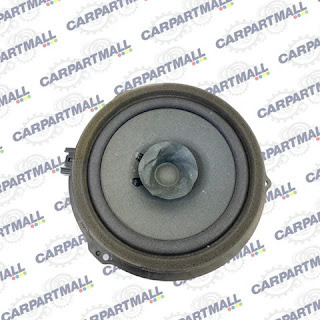
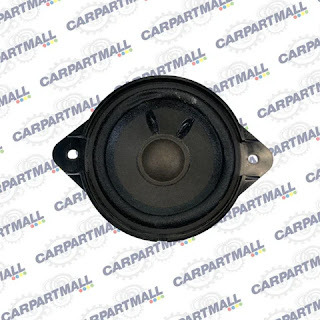

Taking our safety into account is paramount, therefore exceeding the volume power in the audios can cause damage to our ears and can decrease being alert to any eventuality due to the noise it causes. Carpartmall offers you an extensive inventory in the sale of this part that will give you the possibility of obtaining what you are looking for, we invite you to enter our online store with confidence.

Aspects to consider in the sound of our car
There are various factors that can influence the poor sound of our car, you can improve the sound without damaging or harming the originality of each of the components that make up the car's sound system.
The search for the best speaker is complicated when it does not involve the original part of the car, so we choose to find the one that corresponds to our car. We give you direct access so that you have immediate availability to your need, go to our online store.
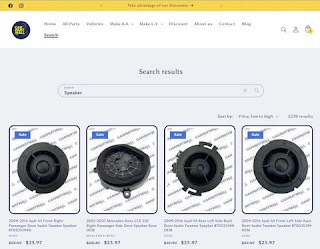
You need an excellent power supply with RCAs outputs to be able to connect an amplifier. It is also important that the speakers have separate channels, so that they offer a good linear graph in frequency. As for wiring, you should have shielded RCAs cables to avoid interference.
Some Tics to improve audio quality are the following:
1. Upgrade your speakers: Invest in quality original speakers to improve the clarity and depth of sound. Look for speakers that are suitable and appropriate for your car for a quality audio experience. In our online store you can get this part from dismantled cars that are in excellent condition, we guarantee their operation; the recommendation is to replace the part of your car with the original since a change may not match each of the components to which the replacement corresponds.
2. Soundproof your car: If you want to reduce external noise, you can soundproof the doors and trunk of your car. This will help minimize distractions and improve the overall sound quality in your vehicle. It involves an additional expense but the environment in your car will be an exceptional experience, the ideal is to keep every part of the car in excellent condition to avoid damage that causes unpleasant sounds.
3. Adjust the equalizer settings: Experiment with the equalizer settings on your car stereo to find the perfect balance of bass, treble, and midrange frequencies. Adjusting these settings can make a significant difference in the audio quality. Depending on the make and model of our car, we can get various radio stereos at Carpartmall, which allow you to equalize the sound to your liking without harming your hearing.
4. Install a subwoofer: Add a subwoofer to your car audio system to enhance low-frequency sound and bring more depth to your music. A subwoofer can make a big difference in the overall audio experience. Being an external element to the original piece is a good option for sound lovers.
5. Use high-quality audio files: Opt for high-quality audio files, such as FLAC or WAV, instead of compressed formats like MP3. High-quality files retain more detail and provide a richer listening experience. Definitely an ideal trick to improve the sound on your speakers, fully recommended by Carpartmall.
6. Place the speakers correctly: Make sure the speakers are positioned correctly for optimal sound distribution. Place them at ear level and avoid blocking them with objects to maximize audio quality. Our car is a special place, we spend time in it and decorate that space to our liking, avoid covering the speakers as it decreases the clarity of the sound.
7. Maintain your audio system: Regularly clean the speakers and audio components to prevent dust buildup and maintain optimal performance. Proper maintenance can extend the life of your audio system, certainly a viable recommendation for all parts of a car, especially the speakers, whose operation is obviously limited by dust and lack of cleaning.
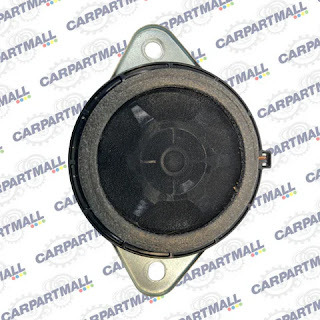
Every time you leave your home and get into your car for a short or long trip you can enjoy a pleasant ride. Your car deserves the care and maintenance to satisfactorily fulfill its task, therefore we must give it the due attention, in particular the quality of the audio can be maintained at a high level, if we are attentive to its care. It will always be a viable option to maintain the originality of the car parts, do not miss the experience of browsing our store and getting your spare part.
Are you tired of the constant failures of your car speakers? Follow our previously stated recommendations and you will see that the failures in the speakers will noticeably decrease. Run and get the original part for your car and ensure proper operation. The prices will leave you impressed and the discounts will surprise you, only in the trusted CARPARTMALL store, enter now and we guarantee our attention, a point in our favor in our service.
If you have questions about how to access our online store and get the right spare part for your car, here we show you:
youtube
In an easy and simple way, enter Carpartmall
1 note
·
View note
Text
Step-by-Step Guide to Installing Your New Amplifier
Are you ready to take your car's audio system to the next level? Installing a new amplifier is a great way to boost your sound quality and overall listening experience. This guide will walk you through the process, step-by-step. Let's get started!

What You'll Need
Before diving into the installation, make sure you have the following tools and materials:
New amplifier
Amplifier wiring kit (includes power cable, ground cable, remote turn-on wire, RCA cables, and fuse holder)
Wire strippers
Crimp connectors
Electrical tape
Screwdriver set
Multimeter (optional but helpful)
Zip ties

Step 1: Plan Your Installation
The first step in installing your amplifier is planning. Decide where you want to mount your amplifier. Common locations include under a seat, in the trunk, or on the back of a rear seat. Ensure the location has good ventilation and is away from moisture and heat sources.
Step 2: Disconnect the Battery
Safety first! Disconnect the negative terminal of your car's battery to prevent any electrical shorts or shocks while working on the installation.
Step 3: Run Power and Ground Wires
Run the power cable from the battery to the amplifier's location. This cable should be routed through the firewall of your car. Use a grommet to protect the wire from sharp edges. Connect the power cable to the positive terminal of the battery using the fuse holder, but don't insert the fuse just yet.
Next, find a good grounding point close to where you plan to mount the amplifier. This could be a bolt or screw that is directly connected to the car's metal chassis. Scrape away any paint to ensure a solid connection. Attach the ground cable to this point.
Step 4: Connect the Remote Turn-On Wire
The remote turn-on wire signals the amplifier to power on when the car's stereo is turned on. Connect this wire to the remote turn-on lead on your head unit. This is typically a blue wire labeled "remote" or "antenna."
Step 5: Run RCA Cables and Speaker Wires
Run RCA cables from the back of your head unit to the amplifier's location. These cables carry the audio signal from your stereo to the amplifier. If you're using a factory head unit without RCA outputs, you'll need a line output converter.
Next, run the speaker wires from the amplifier to your car's speakers. Ensure the wires are of adequate gauge to handle the amplifier's power output.
Step 6: Make the Connections
Now it's time to connect everything to the amplifier. Start with the power and ground cables, then connect the remote turn-on wire. Next, plug in the RCA cables and connect the speaker wires to the appropriate terminals on the amplifier.
Step 7: Install the Fuse and Test
With all connections secure, it's time to install the fuse in the fuse holder near the battery. Reconnect the negative terminal of your car's battery and power on your stereo. Check to ensure the amplifier powers up and is functioning correctly. Use a multimeter to verify proper voltage if needed.
Step 8: Secure and Tidy Up
Once you've confirmed everything is working, secure the amplifier in its mounting location. Use zip ties to tidy up any loose wires and ensure they are not in the way of any moving parts or sharp edges.
Enjoy Your New Sound System!
Once all above is done you've successfully installed your new amplifier. Now it's time to enjoy the enhanced sound quality and volume. Whether you're cruising down the highway or stuck in traffic, your upgraded audio system is sure to make every drive more enjoyable.

0 notes
Text
The Best Audio Cables: Enhancing Your Listening Experience
In the realm of audio equipment, cables often get overlooked. Audiophiles and casual listeners alike tend to focus on speakers, headphones, and amplifiers, forgetting the humble cables that connect these devices. However, choosing the best audio cables can significantly impact your listening experience. In this blog, we'll explore why quality audio cables matter and highlight some of the top choices available today.

Why Do Audio Cables Matter?
Audio cables are the lifelines that carry sound signals from your source to your output device. Poor-quality cables can lead to signal degradation, noise interference, and a generally lackluster audio experience. Conversely, high-quality cables ensure that the signal remains as true to the original as possible, delivering clear, crisp sound.
Types of Audio Cables
Before diving into specific recommendations, it's important to understand the main types of audio cables:
Analog Cables:
RCA Cables: Commonly used in home audio systems, RCA cables come in pairs (red and white) for stereo sound.
XLR Cables: Preferred for professional audio equipment, XLR cables offer balanced connections, reducing noise interference.
3.5mm Aux Cables: Versatile and widely used, these are ideal for connecting smartphones, laptops, and other portable devices to speakers or car audio systems.
Digital Cables:
Optical (Toslink) Cables: Transmit digital audio signals using light, providing high-quality sound without electrical interference.
HDMI Cables: Known for their ability to carry both high-definition video and audio signals, HDMI cables are perfect for home theater setups.
USB Cables: Used primarily for connecting digital audio devices like DACs (Digital-to-Analog Converters) to computers.
Conclusion
Investing in the best audio cables can make a noticeable difference in your sound system's performance. While it's easy to get caught up in the specs of speakers and amplifiers, don't underestimate the impact of a high-quality cable. Whether you're an audiophile striving for perfection or a casual listener wanting a better experience, the right cables can enhance your audio setup, providing clarity, depth, and a truly immersive listening experience. So, next time you're upgrading your gear, remember to pay attention to the cables—they're more important than you might think.
0 notes
Text
Simplify Your Installation Process with Recoil Audio Amp Wiring Kit
Upgrade your car audio system easily using the Recoil Audio Amp Wiring Kit. This complete kit includes everything you need to power your amplifier, including power, ground, and RCA cables. Its high-quality components ensure optimal performance and reliability, while its easy-to-follow instructions make installation a breeze. Whether you're a seasoned installer or a DIY enthusiast, this wiring kit covers you. Say goodbye to tangled wires and perform simplified installation with the Recoil Audio amp wiring kit.
0 notes
Text
Navigating the Spectrum: Wired and Wireless Options for Spotify Pairing
In the dynamic realm of music streaming, Spotify stands out as a leader, continually enhancing user experiences. Among its features, Spotify pairing has gained prominence, allowing users to seamlessly connect their devices. The question at hand is whether Spotify pairing is restricted solely to wireless devices or if there are wired alternatives. In this article, we'll explore the nuances of Spotify pairing, examining both the convenience of wireless connections and the stability offered by wired options.
Understanding Spotify Pairing:
Before delving into wired alternatives, let's first gain a comprehensive understanding of Spotify pairing. This feature facilitates the connection of Spotify accounts with compatible devices like speakers, headphones, and smart TVs, aiming to provide a versatile and immersive listening experience across various platforms.
The Wireless Advantage:
The popularity of wireless Spotify com pair has surged due to its inherent convenience and adaptability. Users can effortlessly link their smartphones, tablets, or computers to Bluetooth-enabled devices, be it wireless headphones, smart speakers, or car audio systems. Spotify pairing in a wireless setting ensures a hassle-free and wire-free listening journey.
The Wired Frontier:
Contrary to common belief, Spotify pairing extends beyond the wireless domain. Spotify caters to users who prefer a more conventional setup or those seeking a stable and high-fidelity audio connection through various wired options.
Wired Headphones and Earphones: Spotify pairing supports wired headphones and earphones through the traditional headphone jack or USB connections, catering to those who prioritize audio quality without relying on wireless signals.
Auxiliary and RCA Connections: Devices like speakers and home theater systems can achieve Spotify pairing through wired connections such as auxiliary (3.5mm) or RCA cables, offering a direct and steadfast link between the device and the audio source.
USB and HDMI Connectivity: Spotify pairing extends to devices with USB or HDMI ports, enabling users to directly connect their smartphones or computers to compatible devices, broadening the array of choices for enjoying Spotify com pair content.
Benefits of Wired Spotify Pairing:
Consistent Audio Quality: Wired connections typically provide a more stable and superior audio experience compared to their wireless counterparts, making them the preferred choice for audiophiles.
No Dependency on Battery Life: Wired connections eliminate concerns about battery life, providing a reliable solution for extended listening sessions without the worry of running out of power.
Conclusion:
In summary, Spotify pairing is not confined to wireless devices; it encompasses robust options for wired connections as well. Whether users prioritize the ease of wireless or the dependability of wired setups, Spotify accommodates both preferences. Through experimentation with different devices and connections, users can discover the ideal combination for an unparalleled listening experience. Whether accessing Spotify through spotify.com/pair or the app, the choice between wired and wireless ultimately rests in the hands of the user.
1 note
·
View note
Link
Check out this listing I just added to my Poshmark closet: Electronic Automotive camera kit with night vision for camera ready audio system.
0 notes
Text
Price: [price_with_discount] (as of [price_update_date] - Details) [ad_1] Product Description Superb Fit: 3.5mm to 2RCA auxiliary stereo Y splitter connects perfectly for smartphones (iPhone, Galaxy, LG, Pixel, etc), MP3 player, Tablet (iPad, Galaxy, Fire, etc) to Stereo Receiver, Speaker, Amplifier, TV, Car and other RCA-enabled devices. 3.5mm to 2RCA Audio Y Cable stereo patch cable is ideal for plugging the 3.5mm plug into the headphone jack of your device or computer and the 2 RCA's to the left and right auxiliary inputs on your sound system. This high-end 3.5mm to 2RCA stereo adapter cables offer incredible audio clarity over all lengths to provide a versatile connection between hardware for all your stereo audio needs. PREMIUM SOUND QUALITY for MUSIC The 3.5mm aux to rca cable features a corrosion-resistant ZINC-plated 3.5mm connector and high-quality polished metal connectors, not only seamlessly transmitted, clear, high-quality stereo sound, but also consistent reliability and minimal signal loss RCA to 3.5mm BROAD USAGE This 3.5mm to 2RCA Audio Auxiliary Stereo Y Splitter Cable is compatible with iPhone, iPod, iPad, tablets including Google Nexus, Samsung, MP3 players, CD players, laptops, tablets and any other digital device with a 3.5mm audio jack; and home audio systems, like amplifier or receiver with RCA jacks. DURABLE-BRAIDED Cord & LADDER DESIGN With a tested 15000+ bend lifespan, Copper audio cable adding to the durability, flexibility and tangle free; Beveled step-down design ensures a secure, fully plugged-in connection, fit with phones in nearly any type of cases. Easy to use; No software and drivers required, easily connect smartphones, tablets, MP3 players, and other mobile devices to a speaker, stereo receiver, or other RCA-enabled device with the 3.5mm to 2-Male RCA adapter cable. The handy adapter cable provides two Male RCA connectors on one end and a 3.5mm Male connector on the other end. The Male RCA connectors fit devices with a left and right audio input, while the 3.5mm Male connector works with portable audio devices equipped with a standard 3.5mm auxiliary jack (typically used for headphones or ear buds).
Please Call us At -9625386424 For Any kind of Queries or Assitance.We are Always Available For Customer Service. [ad_2]
0 notes
Text
Best RCA Cables for Car Audio: Top Picks for Clear and Quality Sound
When it comes to upgrading your car’s audio system, there are many components to consider. One crucial element that often gets overlooked is the RCA cable. RCA cables are responsible for transmitting audio signals from your head unit to your amplifier and speakers, making them a vital component in any car audio setup. When searching for the best RCA cables for car audio, there are a few…

View On WordPress
0 notes
Text
Top 10 Mistakes to Avoid When Installing an Amplifier
Installing a car amplifier can be a game-changer for your audio system, delivering richer and more powerful sound. However, even the most enthusiastic DIY installers can make mistakes that affect performance and longevity. Let's go through the top 10 mistakes to avoid when installing an amplifier!

1. Skipping the Planning Stage
Jumping straight into installation without a clear plan can lead to problems. Before starting, decide on the amplifier's location, wire routing, and connections. Planning saves time and prevents mistakes.
2. Using Incorrect Wire Gauge
Using wires that are too thin for the amplifier's power requirements can cause overheating and poor performance. Refer to the amplifier's manual for the recommended wire gauge, and make sure you use high-quality cables.
3. Poor Ground Connection
A bad ground connection can cause noise issues and reduce your amplifier's efficiency. Ensure your ground wire is connected to a clean, unpainted metal surface close to the amplifier. Scrape off any paint or rust to ensure a solid connection.
4. Neglecting to Fuse the Power Cable
Skipping the fuse in the power cable is a safety hazard. Always install a fuse holder within 18 inches of the battery to protect against short circuits and potential fires.
5. Running Power and Signal Wires Together
Running power cables alongside RCA cables can introduce noise and interference into your audio system. To avoid this, run power and signal wires on opposite sides of the vehicle.
6. Incorrect Gain Settings

7. Ignoring Proper Ventilation
Amplifiers generate heat, and poor ventilation can cause overheating and shutdowns. Mount your amplifier in a location with good airflow, and avoid placing it under heavy insulation or other materials that trap heat.
8. Overloading the Amplifier
Connecting too many speakers or using speakers with the wrong impedance can strain your amplifier. Check the amplifier's specifications for the correct speaker load, and match your speakers accordingly to avoid overloading.
9. Not Using a Line Output Converter
If you're installing an amplifier with a factory head unit that lacks RCA outputs, you'll need a line output converter. Skipping this step can result in poor audio quality and signal issues.
10. Forgetting to Reconnect the Battery Properly
After completing the installation, it's crucial to reconnect the battery correctly. Ensure all connections are secure and the battery terminals are clean to avoid electrical issues.

0 notes
Text
Car Amplifier Issues and Troubleshooting

Car audio enthusiasts often invest in powerful amplifiers to enhance their in-car sound experience. These amplifiers can significantly improve the clarity and volume of your music. However, like any electronic component, car amplifiers can encounter problems over time. In this guide, we will explore common car amplifier issues and provide troubleshooting steps to help you get your car audio system back to peak performance.
Common Car Amplifier Issues
No Sound Output
One of the most frustrating issues is when the amplifier doesn't produce any sound. Several factors could be causing this problem, such as a blown fuse, loose or damaged wiring, or a malfunctioning amplifier.
Distorted Sound
Distorted audio can result from overloading the amplifier, using incorrect settings, or damaged speaker wires. It may sound like clipping, hissing, or crackling.
Amplifier Overheating
Car amplifiers can overheat if they are not adequately ventilated or if they are pushed too hard. Overheating can lead to reduced performance or even amplifier damage.
Turn-On/Off Problems
Some amplifiers struggle with turning on or off correctly. This may be due to wiring issues or problems with the remote turn-on lead.
Ground Loop Noise
Ground loop noise is a common issue in car audio systems. It sounds like a humming or buzzing noise and is often caused by poor grounding or interference from other electronic devices in the vehicle.
Troubleshooting Car Amplifier Issues
Check Power and Ground Connections
Start by inspecting the power and ground connections. Ensure that the amplifier is receiving the correct voltage and that the ground connection is secure. Loose or corroded connections can lead to many amplifier problems.
Verify Wiring and Connections
Examine the speaker wires, RCA cables, and remote turn-on lead. Damaged or loose connections can result in distorted sound or no sound output. Replace any damaged cables and re-secure loose connections.
Test the Fuses
A blown fuse can cause the amplifier to stop working. Check the fuses on the amplifier and at the car's battery. If you find a blown fuse, replace it with the appropriate amperage rating.
Check for Overheating
If your amplifier tends to overheat, ensure it is adequately ventilated. Consider adding a fan or relocating the amplifier to a cooler location. Avoid pushing the amplifier to its limits for extended periods.
Adjust Settings
If you're experiencing distorted sound, make sure the amplifier's gain, crossover, and bass boost settings are correctly configured. Improper settings can cause distortion. Use the manufacturer's guidelines for optimal settings.
Address Ground Loop Noise
To eliminate ground loop noise, try grounding all components to a common point and use high-quality shielded RCA cables. You can also install a ground loop isolator to reduce interference.
Seek Professional Help
If you've attempted troubleshooting and are still facing issues, it might be best to consult a professional car audio installer or technician. They can diagnose and repair more complex problems.
Car amplifier issues can be frustrating, but most of them are solvable with some troubleshooting and maintenance. Regularly inspecting your system, ensuring proper wiring and connections, and using your amplifier within its recommended limits will help prevent many of these issues. By following the troubleshooting steps mentioned above, you can resolve most problems and enjoy high-quality audio in your car once again.
1 note
·
View note